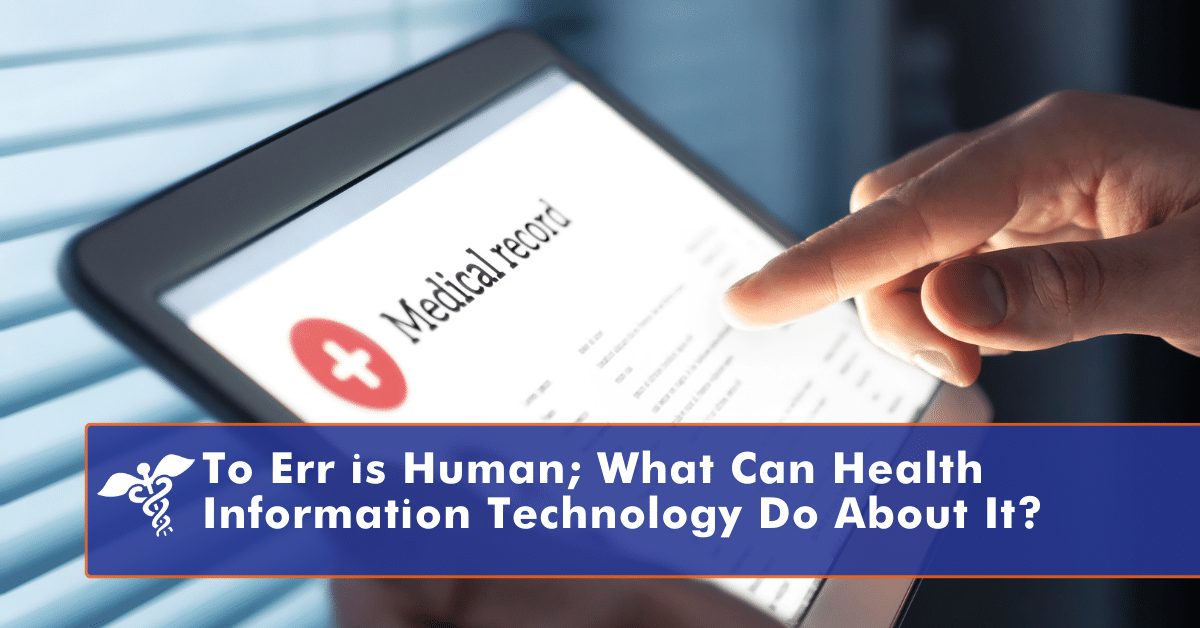
Written By Charles Sneiderman, MD PhD
The Institute of Medicine (IOM) of the National Academy of Sciences has published a series of reports over the past 15 years on the problem of human error in healthcare, the most infamous being titled “To Err is Human” (1). Although these reports may substantially overestimate the magnitude of this problem, even one preventable death or injury in an enterprise whose first rule is “do no harm” is one too many. The assumption that Health Information Technology (HIT) would be the solution to all problems of safety and efficiency in American healthcare has driven an unprecedented investment, subsidized by the American taxpayer through financial incentives to those providers who participate in Medicare and Medicaid, and now virtually every hospital and physician office has some electronic medical record (EMR) capability.

reviews of the topic! Since the two major functions of medical practice are diagnosis and treatment of disease, I will address this overview of the potential of HIT to address error in two separate articles, with the first addressing therapeutics and emphasizing hospital therapeutics because that is the setting of most of the studies on error and systematic attempts at intervention.
One of the successes of American medicine is that people survive chronic illnesses longer and are able to live in the community without the need for the sorts of dramatic intervention for which US hospitals are famous. Thus admission to hospital, with the exception perhaps of normal childbirth, usually means that someone is so sick or injured that they can’t be treated safely as an outpatient. Hospitals are under pressure to treat the very sick very quick both because of the life threatening acuity of the illnesses and the economic pressure to get patients better and discharged quickly to meet the economic challenge of insurance limits.
Hospitals examine all inpatient deaths asking “was there any action that could have been altered which could possibly have prevented this death?” Many errors that can cause patient injury or even death in this setting are clearly preventable, for example wrong site surgery, wrong doses of medication, even treating the wrong patient; preventing those kinds of errors requires careful communication between team members, repeated checking of information, and constant vigilance of technique. These procedures are not the most exciting, intellectually challenging, or emotionally rewarding activities of highly trained health care providers, but are probably the easiest and cheapest way to save a life! While computers never get tired, bored, or distracted, the science of human-computer interaction is still evolving and much of the most widely used software in the healthcare setting has been developed without systematic user testing and continuous quality improvement. Nevertheless there are numerous examples of the value of HIT in preventing therapeutic error, e.g. bar code identification of patients and their individualized doses of medication and drug interaction checking at the time of computerized medication order entry. However careful design of such systems is essential to allowing skilled professionals to perform their tasks with minimal disruption of their workflow (2,3).
References
- Kohn LT, Corrigan JM, Donaldson MS, editors. To Err is Human: Building a Safer Health System. Institute of Medicine (US) Committee on Quality of Health Care in America; Washington (DC): National Academies Press (US); 2000.
- Ching JM, Williams BL, Idemoto LM, Blackmore CC. Using lean “automation with a human touch” to improve medication safety: a step closer to the “perfect dose”. Jt Comm J Qual Patient Saf. 2014 Aug;40(8):341-50.
- Nasuhara Y, Sakushima K, Endoh A, Umeki R, Oki H, Yamada T, Iseki K, Ishikawa M. Physicians’ responses to computerized drug interaction alerts with password overrides. BMC Med Inform Decis Mak. 2015 Aug 28;15:74.
